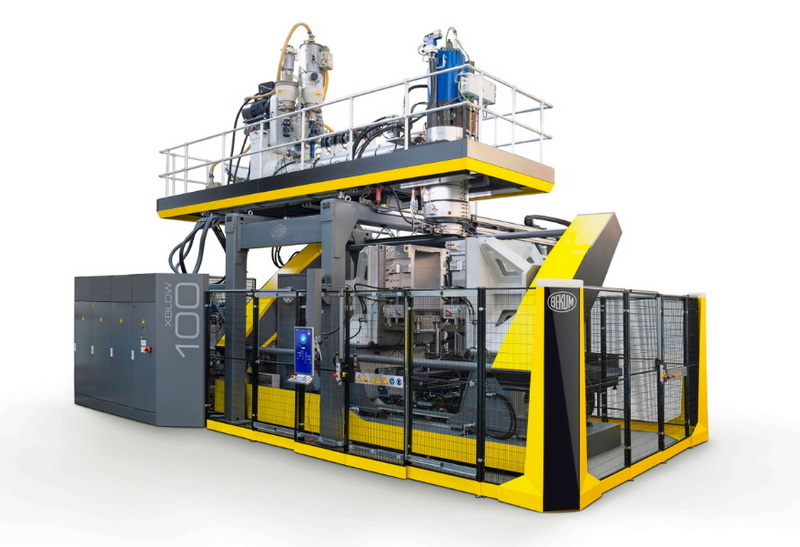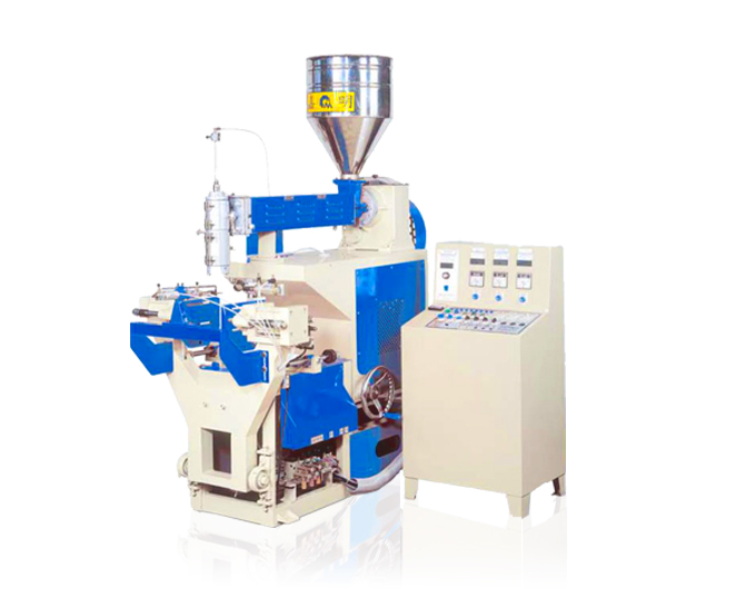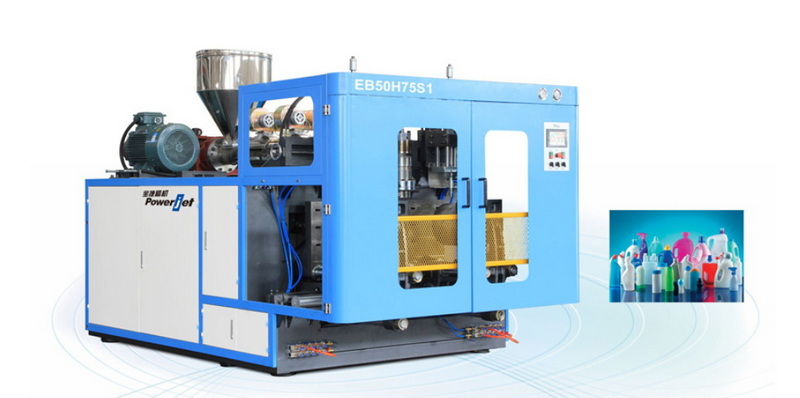Content Menu
● Introduction to Extrusion Blow Molding Machinery
>> Components of Extrusion Blow Molding Machinery
● Working Principle of Extrusion Blow Molding Machinery
● Applications of Extrusion Blow Molding Machinery
● Advantages of Extrusion Blow Molding Machinery
● Innovations in Extrusion Blow Molding Machinery
● Challenges and Solutions in Extrusion Blow Molding
● Integration with Other Processes
● Conclusion
● FAQs
>> 1. What is the primary function of the extruder in extrusion blow molding machinery?
>> 2. How does the blow pin work in extrusion blow molding machinery?
>> 3. What are the common applications of extrusion blow molding machinery?
>> 4. What are the advantages of using extrusion blow molding machinery?
>> 5. How does extrusion blow molding machinery contribute to sustainability?
● Citations:
Extrusion blow molding machinery is a critical component in the manufacturing process of hollow plastic objects, such as bottles, containers, and automotive parts. This machinery plays a pivotal role in transforming raw plastic materials into complex shapes with high precision and efficiency. In this article, we will delve into the details of extrusion blow molding machinery, its working principle, applications, and advantages.

Introduction to Extrusion Blow Molding Machinery
Extrusion blow molding machinery is designed to automate the process of creating hollow plastic parts by inflating a heated plastic tube, known as a parison, inside a mold. The machinery consists of several key components, including an extruder, die head, mold, blow pin, and control system.
Components of Extrusion Blow Molding Machinery
1. Extruder: This is the heart of the machinery, responsible for melting and extruding the plastic. It consists of a hopper, screw, and barrel. The screw transports the plastic pellets forward, generating heat through friction and external heaters, which causes the plastic to melt.
2. Die Head: The molten plastic is shaped into a parison at the die head. The shape and size of the die head determine the dimensions of the parison. Recent advancements include accumulator heads and co-extrusion technology, which allow for the production of complex shapes and multi-layered products with enhanced barrier properties[1].
3. Mold: Designed to hold the shape of the final product, the mold consists of two halves that close around the parison and are cooled to solidify the plastic. Modern mold technologies include rapid tooling and 3D printing, which enable faster mold production and greater design flexibility[1].
4. Blow Pin: Injects compressed air into the parison to inflate it against the mold walls.
5. Control System: Manages the machine's operation, ensuring precise control over temperature, pressure, and timing. Advanced control systems include programmable logic controllers (PLCs) and human-machine interfaces (HMIs), which enhance product consistency and streamline the production process[1].
Working Principle of Extrusion Blow Molding Machinery
The process involves several key steps:
1. Material Preparation: Plastic resin pellets or granules are fed into the hopper of the extruder.
2. Extrusion: The plastic is melted and extruded through a die to form a parison.
3. Mold Closure: The mold closes around the parison.
4. Blowing: Compressed air is injected into the parison to inflate it against the mold walls.
5. Cooling and Ejection: The plastic cools and solidifies, and the mold opens to eject the finished product.
Applications of Extrusion Blow Molding Machinery
Extrusion blow molding machinery is widely used in various industries:
- Packaging Industry: Produces plastic bottles, containers, and packaging solutions for food, beverages, cosmetics, and pharmaceuticals. The use of co-extrusion technology allows for the creation of products with enhanced barrier properties, improving shelf life and product integrity[1].
- Automotive Industry: Manufactures automotive components such as fuel tanks, air ducts, bumpers, and dashboards. The flexibility of extrusion blow molding enables the production of complex shapes that meet specific automotive requirements.
- Consumer Goods: Used for toys, sports equipment, and recreational items. The ability to produce a variety of shapes and sizes makes it ideal for consumer products.
- Industrial Applications: Produces industrial storage tanks, drums, and other large-scale plastic products. Modern machines are equipped with energy-efficient technologies, reducing operational costs and environmental impact[5].

Advantages of Extrusion Blow Molding Machinery
1. Cost-Effectiveness: Lower costs compared to other blow molding techniques due to the use of low-pressure air and no need for preforms.
2. High Productivity: Automation technology allows for faster production cycles and automatic recycling of excess material.
3. Flexibility: Enables the creation of a variety of products with complex shapes.
4. Energy Efficiency: Modern machines incorporate electric drives and energy recovery systems, reducing energy consumption and environmental impact[1].
Innovations in Extrusion Blow Molding Machinery
Recent innovations include:
- Intelligent Control Systems: Modern machines are equipped with advanced automation control systems that enable fully automated production and real-time monitoring of production parameters[2].
- High-Efficiency Energy-Saving Technology: Energy management systems and advanced cooling systems optimize energy use and reduce resource waste[2].
- Material Innovation: The use of high-performance plastic materials and renewable materials enhances product durability and sustainability[2].
- Innovative Mold Technology: Quick mold change systems and optimized mold designs improve production efficiency and product quality[2].
Challenges and Solutions in Extrusion Blow Molding
Despite its advantages, extrusion blow molding faces challenges such as uneven wall thickness and flash formation. Solutions include adjusting extrusion conditions, using parison control systems, and integrating deflashing devices into modern machines[6][8].
Integration with Other Processes
Extrusion blow molding can be combined with other processes like compression molding and insert molding to enhance product precision and functionality. For instance, combining extrusion blow molding with compression molding allows for precise control over both the outer and inner diameters of a part[7].
Conclusion
Extrusion blow molding machinery is a versatile and efficient tool for manufacturing a wide range of plastic products. Its ability to produce complex shapes with high precision and cost-effectiveness makes it a preferred choice in various industries. As technology advances, these machines continue to evolve, offering higher efficiency and reduced environmental impact.

FAQs
1. What is the primary function of the extruder in extrusion blow molding machinery?
The primary function of the extruder is to melt and extrude the plastic into a parison. It consists of a hopper, screw, and barrel, where the screw transports the plastic pellets forward, generating heat through friction and external heaters.
2. How does the blow pin work in extrusion blow molding machinery?
The blow pin injects compressed air into the parison to inflate it against the mold walls. This process is crucial for shaping the plastic into the desired form.
3. What are the common applications of extrusion blow molding machinery?
Extrusion blow molding machinery is commonly used in the packaging industry for bottles and containers, the automotive industry for parts like fuel tanks, and in consumer goods for toys and sports equipment.
4. What are the advantages of using extrusion blow molding machinery?
The advantages include cost-effectiveness due to the use of low-pressure air, high productivity through automation, and flexibility in producing complex shapes.
5. How does extrusion blow molding machinery contribute to sustainability?
Extrusion blow molding machinery contributes to sustainability by optimizing production efficiency, minimizing waste, and reducing environmental impact through the use of recyclable materials and energy-efficient processes.
Citations:
[1] https://www.yankangmachine.com/blow-molding-machine-technology/
[2] https://www.xz-machinery.com/the-latest-innovations-in-ibc-blow-molding-technology/
[3] https://www.lyondellbasell.com/link/7736399b03fc48bfba2d01256c41f90d.aspx
[4] https://formlabs.com/blog/blow-molding/
[5] https://www.st-blowmoulding.com/news/blowmoulding-machines-at-npe-2024
[6] https://plasticbottlemake.com/Solutions-to-common-problems-of-extrusion-blow-molding-machine-production-id3310780.html
[7] https://geminigroup.net/engineered-plastics/technical-blow-molding/manufacturing-capabilities/extrusion-blow-molding/
[8] https://www.wangbrand.com/en/faq_02.htm
[9] https://zjgshengrong.com/5-innovative-hybrid-electric-blow-molding-machines-for-complex-hollow-product-solutions/
[10] https://www.alpla.com/en/capabilities/technologies
[11] https://www.fries-kt.com/extrusion-blow-molding-machine/?lang=en
[12] https://www.yankangmachine.com/blow-molding-products/
[13] https://www.youtube.com/watch?v=xsHHdXo1LDY
[14] https://www.luiso.net/en/2025/02/12/extrusion-blow-molding-machines-innovation-and-reliability-for-the-industry/
[15] https://www.moldplasticinjection.com/news/10-common-blow-molding-problems-and-solutions
[16] https://www.wangbrand.com/en/faq_15.htm
[17] https://www.mywaymachine.com/the-future-of-blow-molding-advancements-in-automation-and-technology/
[18] https://www.chinaplastictech.com/extrusion-blow-molding-failures-and-remedies.html/
[19] https://www.linkedin.com/pulse/future-development-trend-blow-molding-machine-cici-peng
[20] https://www.meccanoplastica-group.com/innovations-in-blow-moulding-machine-construction/






















